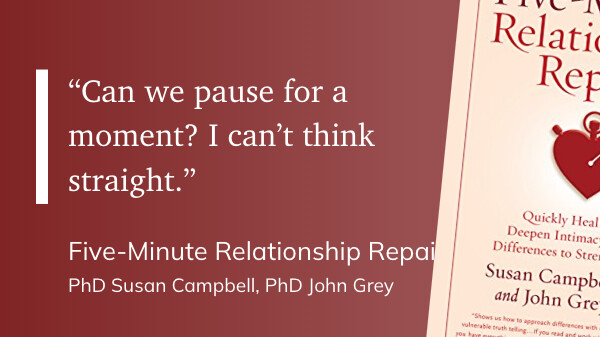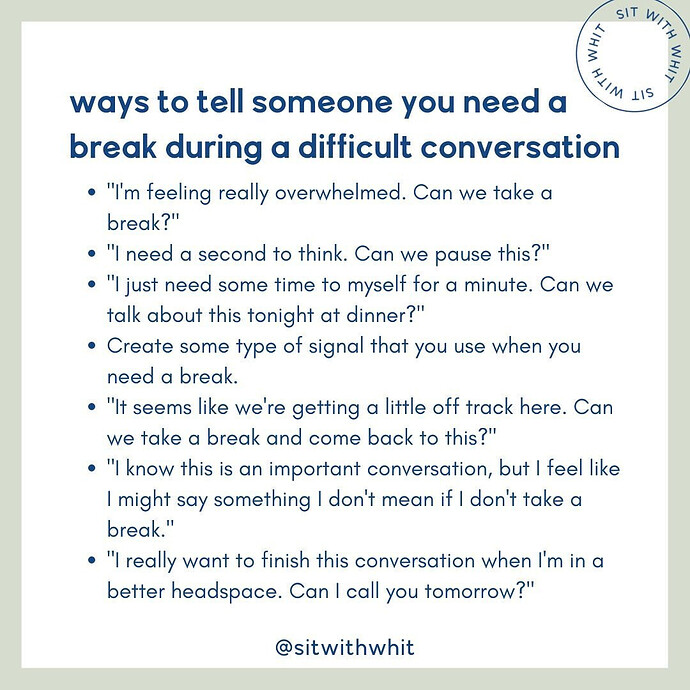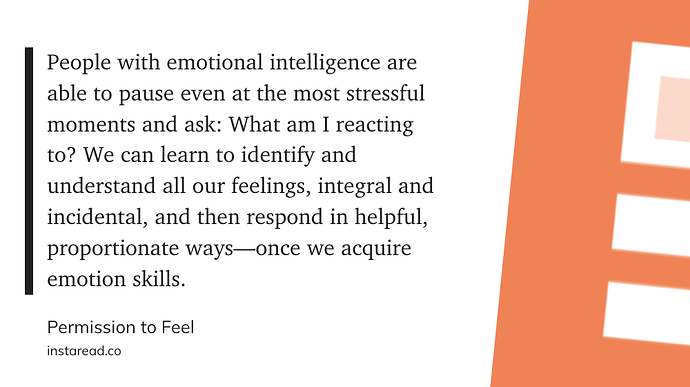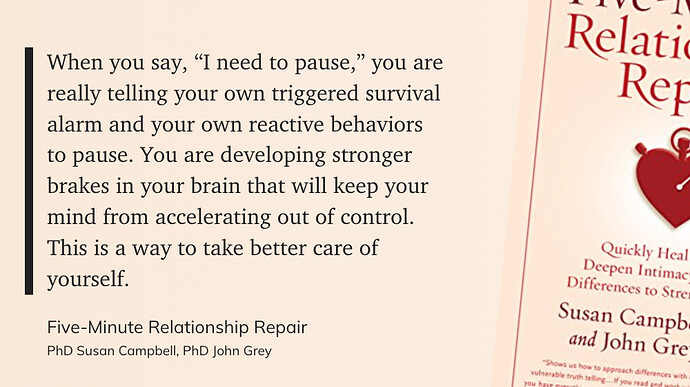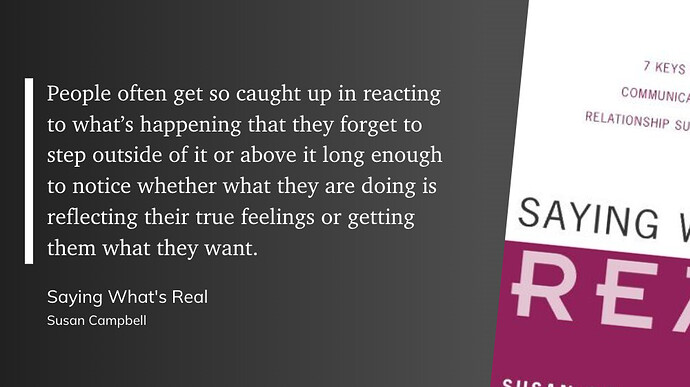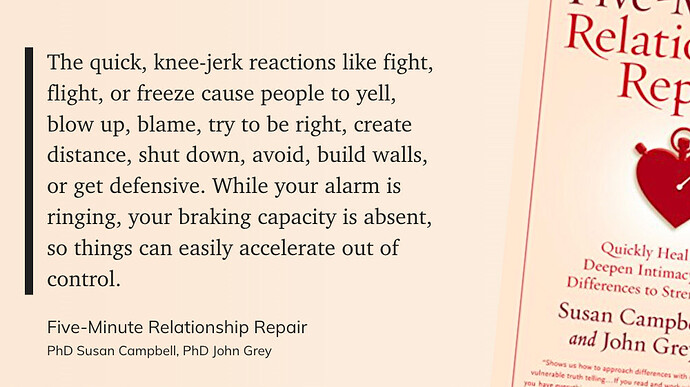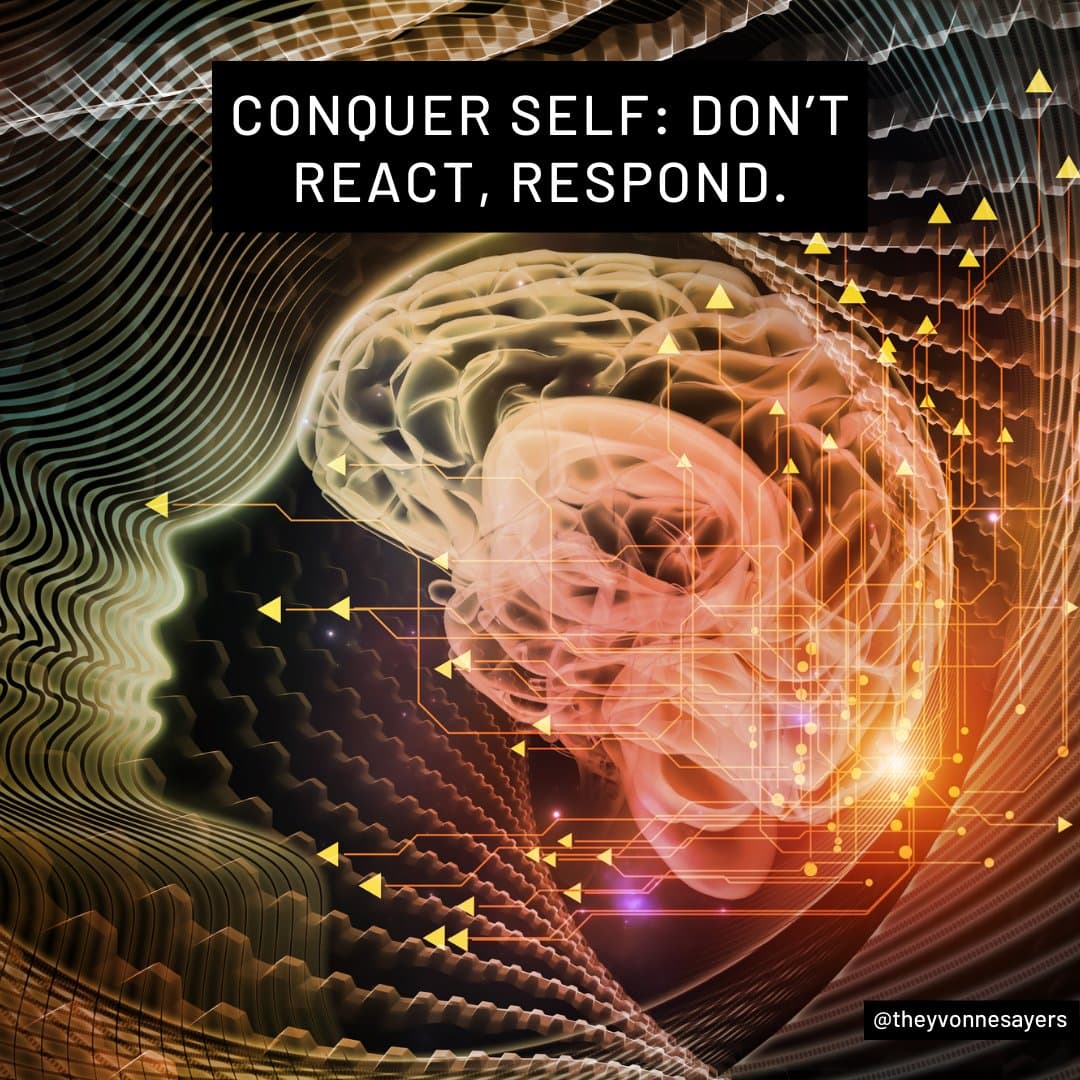Powerful Pause
The Powerful Pause is when we consciously take a break in the action. It gives us a chance to settle the nervous system, come out of fight-flight-freeze, and gain clarity.
The powerful pause respects that the situation and the people involved (especially ourselves!) matter enough to bring our best qualities and real skills to the engagement. We can’t do that if we’re stressed, triggered, overwhelmed, angry, wanting to run, or feeling like we can’t say NO.
If you like using the pause button when watching a video or listening to a recording, you are going to LOVE being able to use the pause in an argument or discussion or when a big decision is needed.
- In the slight “pause” between the stimulus and the response — even if only milliseconds — there is choice. (Meditation and EFT Tapping help to develop that inner pause.)
- When we say, “Stop!” we can frustrate those who need a change or decision right away. “I need a brief pause” says this is important while also allowing us to tend to biological imperatives! If our emotional system is flooded, we cannot think straight.
- People who activate the Powerful Pause feel more free and clear in their decisions. They do less harm to relationships, too, because they learn (the hard way?) that when they are defensive, frustrated, or not feeling understood plowing forward without a break doesn’t result in lasting Agreements that Work.
Keep from Losing It
We’re human, so we have a primitive brain. Its job is to detect threats, and it can get confused. Another human being upset with us can feel like an attack! Even if they are not upset with us, our mirror neurons can flood our nervous system and blood chemistry making it impossible to think clearly.
Of course, not being able to think clearly never stopped people from continuing to argue, right? As tensions rise, so does the activation of our defenses. This significantly impacts people who are highly empathetic and sensitive or who have unresolved trauma.
The Powerful Pause is a real skill… which means it needs to be developed and practiced. To “keep from losing it,” we’ll want to Pause well before our primitive brain has hijacked the whole body. That means building awareness of the early signs of triggering in our body and pausing before those feelings get too intense.
When Tensions are Rising
Maybe we’re not the one being triggered (yet). We’re noticing, though, that the other(s) are losing their grounding. Tensions are rising. Body language is showing defensiveness. People are cutting each other off. Personal attacks are beginning.
“Let’s take a Pause here.”
If you care about emotional well-being, asking for a pause or insisting on one can change the interactions that follow profoundly. The more we practice pausing in little ways, the more skillful we’ll be at noticing and asking for pauses that bring people’s power Together — rather than inflicting their powerful emotions on others.
As a Common Practice with Friends and Family (Including Kids)
You can reach a consent agreement, before beginning a difficult conversation, that anyone can call a Pause at any time without punishment or blame.
Include reassurance that the relationship and the topic are important, and any Pause needed isn’t to sidestep. It’s there as an option so the power can flow towards clear understanding and mutual respect — avoiding the kind of damage that can happen if triggered people keep going without a pause.
The more we cultivate this in friendships, families, workplace, and community, the more we establish that what matters to the heart deserves grounded, peace-filled engagement. The powerful pause supports that being possible.
Useful Questions
- Do I need a minute to collect myself? Can I ask for that? Can I give myself the gift of a minute?
- What am I reacting to here?
- If that situation did NOT go the way I’d hoped, what was the earliest moment when a powerful pause might have helped?
- What signals does my body-mind give me when I really could use a pause?
- If a friend sees me do or say anything that indicates I’m triggered, would I be open to them suggesting a pause at that point?
- Am I open to other people asking for a Pause? If not, what beliefs do I have that stop me from seeing a pause as a good and useful practice?
- What do I think that person will say if I ask for a pause (or say I am going to take one)? What EFT Tapping can help prepare me for that reaction?
- What words would I like to use to reinforce my decision to pause and benefit the relationship at the same time?
- What if I could ask myself to Pause before engaging with someone rather than after already engaging? What benefits might that provide if it were appropriate to do so?
Resources
- The Power-Full Pause- Real Skills Workshop
- I Need a Pause Button in the Center of My Forehead - Article
Related Concepts
Co-Regulation, Be Calm and Confident, Primitive Brain
Links
- Discuss Powerful Pause in the Community Center
- Share this link to the Concept of Powerful Pause: https://www.thrivingnow.com/concept/powerful-pause
